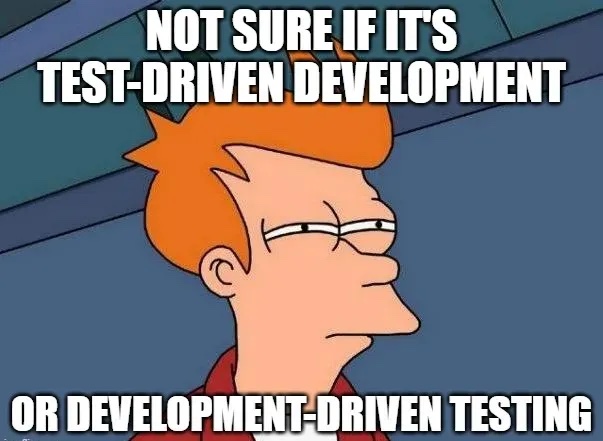The core responsibility of a developer lies in defining and implementing the domain layer, ensuring it aligns perfectly with the project’s requirements and business rules. This is where the true value of a developer shines – understanding the details of the business and translating them into a robust, functional domain model. One powerful approach to accomplishing this crucial task is Test-Driven Development, a methodology that emphasizes writing tests before writing any code. This approach helps to ensure that the code meets the specified requirements and reduces the risk of introducing bugs. But what if we could take TDD a step further, using the power of AI to automate the code generation process itself?
Traditional TDD
Traditional TDD follows a simple but powerful cycle:
- Write a failing test: define a specific behavior you expect from your code. This test should initially fail because the code doesn’t yet exist.
- Write the minimum code to pass the test: focus on writing only the code necessary to make the test pass. Avoid over-engineering at this stage.
- Refactor: once the test passes, refactor your code to improve its structure, readability, and maintainability, while ensuring the test still passes.
- Repeat: continue this cycle, adding new tests for different functionalities and iteratively improving your code.
TDD’s strength lies in its ability to drive development based on clearly defined expectations, leading to more reliable code.
The AI-Powered Twist: TDD 2.0?
Thoroughly defined tests are crucial. They act as a precise specification for the desired behavior of the domain layer. By covering all business cases, including edge cases and potential exceptions, developers can significantly reduce the risk of errors and inconsistencies within the domain logic. These domain-specific errors are difficult to identify and track down, often hidden and causing unexpected issues later in the development cycle. Accurate and comprehensive tests are the best defense against these hidden pitfalls.
What if developers could concentrate on what they do best – defining those crucial business rules and ensuring their complete coverage through comprehensive tests – and then leave the “how” to an AI assistant? This approach allows developers to focus on the most critical aspect of software development: ensuring the domain logic is correct and complete.

From Tests to Code
Once the comprehensive test suite is in place, the implementation of the domain logic can be delegated to an AI code generation tool. It takes the well-defined tests as input and generates the code that should satisfy those tests. Sounds easy, right?
Now, here’s the crucial part: even if the AI makes mistakes or “hallucinates”, these errors are easily caught. The generated code can be seamlessly integrated into the developer’s preferred IDE. Any code that doesn’t compile or doesn’t pass the existing tests will be immediately flagged. Developers can then use their expertise and familiar tools to quickly identify and correct the AI’s errors. This iterative process ensures that the final code is both correct and aligned with the defined business rules.
As AI models improve, we can expect to see more sophisticated tools that can handle complex scenarios and generate robust, reliable code. This approach could significantly transform the software development landscape, allowing developers to focus on higher-level design and problem-solving. It’s about working smarter, not harder. And that’s the key to building better software.